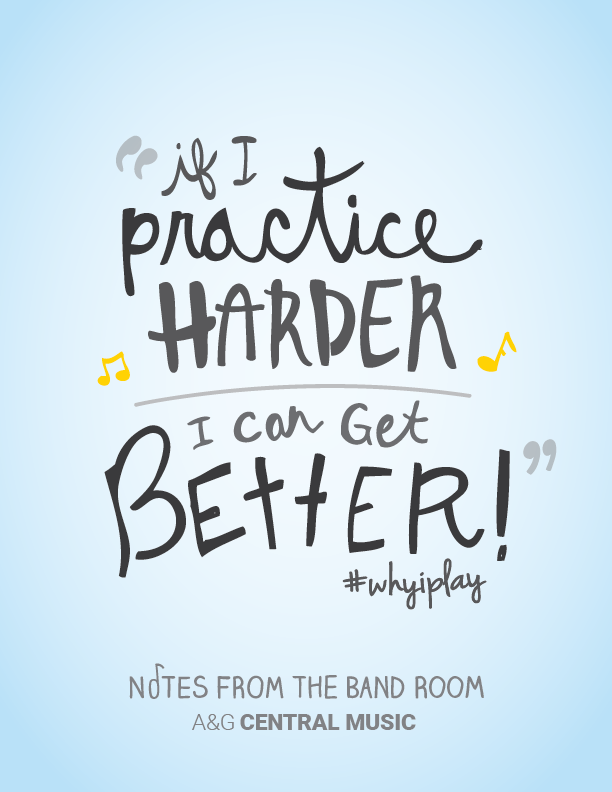6 Steps to Creating Your Practice Routine!
The semester has come to an end, and for many this means taking a break from anything related to school. But, for us musicians, this means more time to practice! Band students know Solo and Ensemble is just around the corner, and of course, we want to take advantage of the extra time we'll have! For beginning musicians, and for musicians who have not done so yet, it's time to create your practice routine.
To improve, we must put in the time, and having regular practice builds discipline. During practice, if we have a routine, we're able to maximize the time we have. Whether your practice sessions are 20 minutes, or an hour, with a routine, you'll feel accomplished.
1. Be Realistic
Be realistic about how much time you can practice a day. We want to set ourselves up for success! Students in school are busy, but lets hope to get AT LEAST 15 minutes in a day, and maybe we take one day off.
2. Find Your Space
Find a practice space with limited distractions, and where you feel comfortable spending time.
3. Warm Up
The first 1/4 to 1/3 of your practice should be a warm up. Scales and rudiments are great warm ups. Warms ups should be something you've already learned, and exercise technicalities. You can tailor your warm ups to your main focus.
4. Main Focus
Now that you're warmed up, it's time to practice what you're working on learning and improving. Your main focus can be a particular piece your learning for a performance, or a piece that practices your weaknesses. If you struggle playing 16th notes, make your main focus a piece with lots of 16th note rhythms. Slow it down, get it right. Maybe your main focus is the piece you'll be playing for Solo and Ensemble.
Whatever you choose to work on, take a break after 20 minutes (if you have longer practice sessions) and come back to it in 5 or 10. Your brain needs time to process and retain new information.
5. Dessert
After practicing our warm ups and our main focus, we're ready for a little dessert. Use the last quarter of your practice for playing music you absolutely love. Pick up some fun music books, Disney play-alongs, or your favorite music score, whatever your fancy is! It's important to end every practice smiling!
6. Log Your Practice
Keep a notebook to log your practice. Prepare your practice BEFORE you practice. Too many times I've sat down to practice, and then I can't think of what to work on! I play this or that, and it turns out I never really practice at all! Have a plan before you sit down, this makes it easy to stay on task.
Use the notebook to jot down what you'll practice next session, and then take notes to help formulate what'll you'll need to hone in on for future practices.
Video or record you sessions, listening and even watching our practices can point out the areas we need to improve on, whether it be dynamics, or posture.
REMEMBER, practice doesn't make perfect, perfect practice makes perfect. Playing music teaches us a lot, one characteristic being patience. Slowly increase your tempo as you're able to play with dynamics and without mistakes. Use your tuner, and use your metronome.
Below are two examples of a 30 minute practice routine.
5 Minute Warm Up, 15 Minute Main Focus, 10 Minute Dessert
10 Minute Warm Up, 15 Minute Main Focus, 5 Minute Dessert




